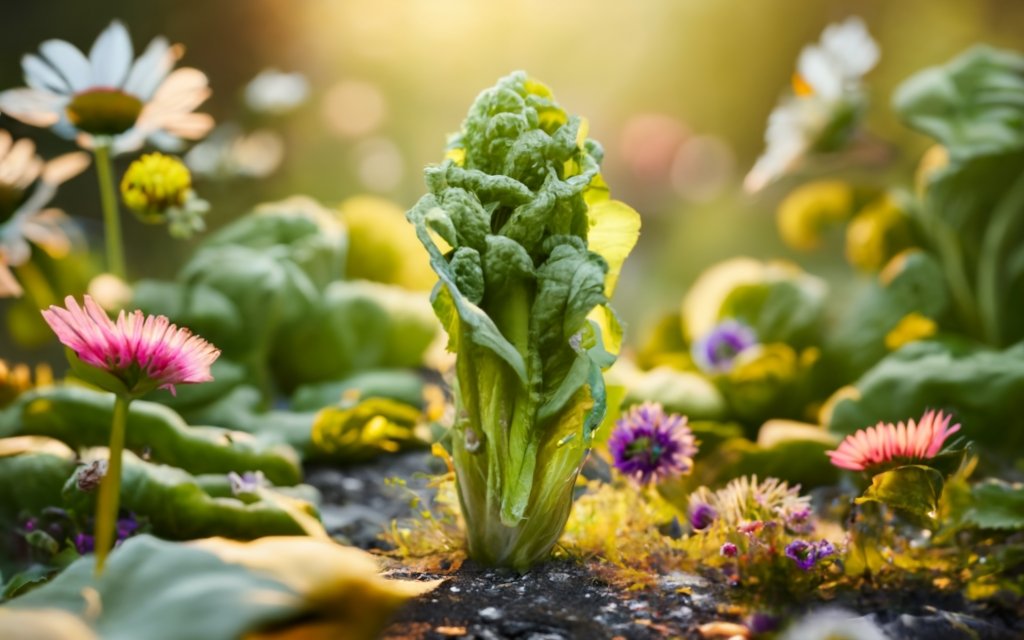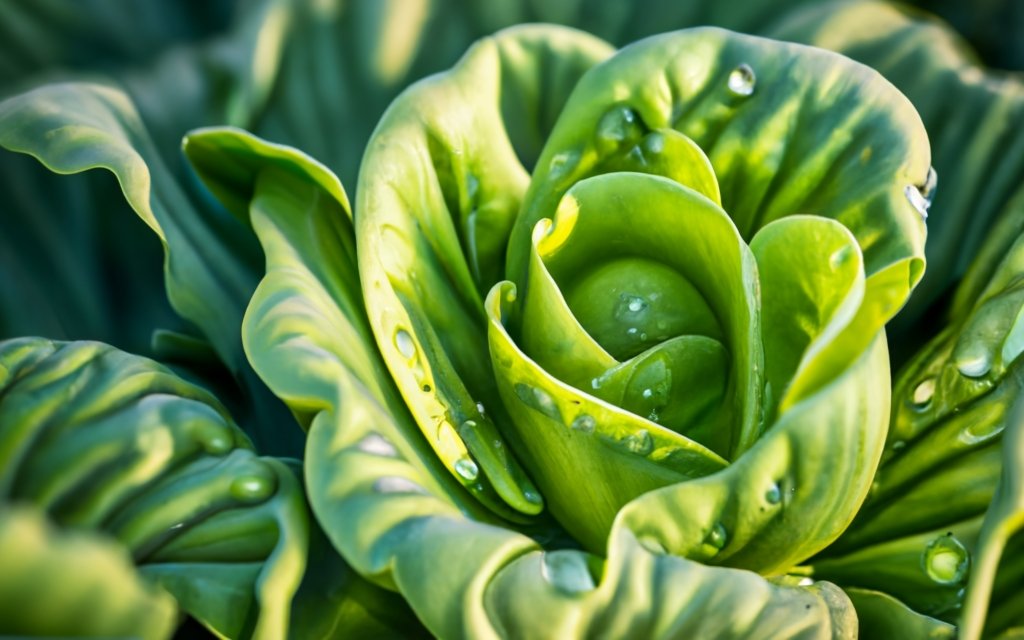Understanding Lettuce Bolting
What is Bolting?
Have you ever noticed your lettuce suddenly shooting up tall stalks, as if it’s on a growth spurt? That’s bolting. In simple terms, bolting is when lettuce, or any plant for that matter, switches gears from leaf-making to seed-producing. It’s like the plant’s internal alarm clock goes off, saying, “Time to make seeds!” This shift isn’t just a quirky plant habit; it marks the end of the road for tender, tasty lettuce leaves and the beginning of a seed-producing mission.

Why Lettuce Plants Bolt
Now, why does lettuce bolt? It’s not just doing it to frustrate gardeners. Several factors kickstart this process:
- Heat: Lettuce prefers it cool. When the mercury rises, lettuce gets the signal to bolt. It’s the plant’s way of saying, “It’s too hot; let’s wrap this up.”
- Day Length: As days get longer, lettuce takes it as a cue to start its seed-making business. It’s all about timing, and longer days mean go-time for seed production.
- Moisture Stress: If lettuce gets thirsty too often, it might bolt. Consistent watering keeps it happy and focused on growing leaves, not seeds.
Prevent Bolting Lettuce Plants
Bolt Resistant Lettuce Varieties
Picking the right lettuce variety is your first line of defense against bolting. Choose bolt-resistant types to extend your lettuce’s leafy days. Here are some top picks:
- Jericho Romaine
- Nevada Summer Crisp
- Muir Summer Crisp
- Coastal Star Romaine
- Black-Seeded Simpson Leaf
These cultivars are your garden superheroes when it comes to resisting bolting, especially under the tough conditions of summer heat and extended daylight.
Optimal Planting Techniques
Getting your planting strategy right is crucial for preventing bolting. Here’s how to do it:
- Time it Right: Plant early in spring or later in summer to dodge the intense heat. Cooler conditions are lettuce’s best friend.
- Pick the Perfect Spot: Find a cool, shady spot in your garden for summer planting. Think of it as giving your lettuce a comfortable outdoor lounge.
- Soil Matters: Prepare your soil so it retains moisture and keeps roots cool.
- Consistent Watering: Regular watering keeps lettuce from getting too thirsty and stressed.
- Succession Planting: Sow new seeds every few weeks for a continuous supply of fresh lettuce.
These steps will help keep your lettuce focused on leaf production rather than rushing into its
Managing Bolting in the Vegetable Garden
Identifying Signs of Bolting
Spotting the early signs of bolting in lettuce can be crucial in taking timely action. Here are some tell-tale signs:
- The center of the lettuce starts to elongate.
- Tender leaves become fewer and tougher.
- A flower stalk begins to emerge.
Noticing these changes? Your lettuce is sending an SOS!

Immediate Actions to Delay Bolting
Caught your lettuce red-handed (or green-stalked) trying to bolt? Here’s what you can do:
- Shade it: As soon as you notice bolting, provide shade. A shade cloth can be a quick fix to lower the temperature around your lettuce.
- Water Well: Keep the soil consistently moist. Lettuce loves a drink, especially in the heat.
- Mulch it Up: Applying mulch helps retain soil moisture and keeps the roots cool.
- Trim the Flower Stalk: If you see a flower stalk, snip it off. It can buy you some extra leafy time.
- Move it, Maybe?: In extreme cases, consider transplanting to a cooler, shadier spot.
Remember, while you can’t turn back time, these steps can slow down the bolting process, giving you more of those crispy leaves.
What to do After Your Lettuce Goes to Seed
Dealing with Bolted Lettuce
So, your lettuce has bolted. What now? First off, bolted lettuce is still safe to eat, but brace yourself for a bitter bite. As the lettuce bolts, the leaves turn bitter and tougher. It’s a natural defense mechanism, but not the most pleasant for our taste buds.
Utilizing Bolted Lettuce
Don’t rush to uproot your bolted lettuce yet! There are a few clever ways to use it:
- Seed Saving: Let the lettuce flower and produce seeds. You can collect these for next season’s planting.
- Attracting Pollinators: The flowers of bolted lettuce are a magnet for beneficial insects. They help pollinate other plants in your garden.
- Composting: Bolted lettuce can be added to your compost pile, turning a problem into nutrient-rich compost.
- Feeding Wildlife: Some gardeners let bolted lettuce remain to provide food for birds and other wildlife.
Will Lettuce Regrow After Bolting?
Once lettuce bolts, it’s unlikely to regrow in the same way as before. Bolting signifies the plant’s transition from leaf production to flowering and seeding. While some leafy varieties might sprout new leaves after cutting back the bolted parts, these new leaves are often smaller and can be more bitter. It’s usually more effective to start fresh with new seeds for a consistent leaf yield.
Bolted lettuce isn’t the end; it’s an opportunity for a different kind of garden contribution.
Additional Considerations
Adapting to Climate and Soil
Tailoring your lettuce cultivation to fit your local climate and soil conditions is vital. Every lettuce plant’s dream is to grow in an environment that feels just right. Whether you’re dealing with a cool northern breeze or a southern sun, understanding your specific climate and adapting your planting schedule is key. And don’t forget the soil – a happy seedling in well-suited soil is less likely to bolt prematurely.

Creating a Bolting-Resistant Garden
To stop lettuce from bolting, think of your garden as a bolt-resistant fortress. This involves:
- Choosing the Right Spot: Locate areas in your garden that are less exposed to intense midday heat.
- Timing Your Planting: Plant at times when the temperatures are more lettuce-friendly.
- Utilizing Shade: Strategic placement of taller plants or structures can provide natural shade, shielding your lettuce from harsh sunlight.
- Regular Watering: Keeping the soil consistently moist (but not waterlogged) reduces stress on the plants.
- Soil Health: Maintain nutrient-rich, well-draining soil to keep your lettuce happy and less inclined to bolt.
With these strategies, you can create a garden environment where lettuce thrives without rushing to flower and seed.
